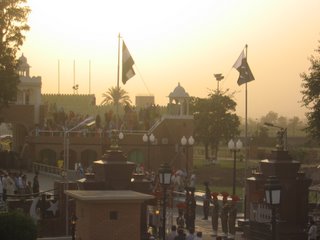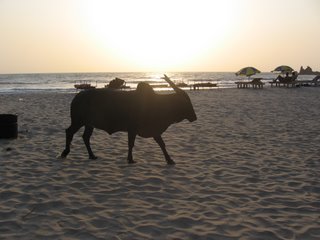
I didn’t want to go to Agra. It was out of the way and expensive to get to. I only went because deep down I needed proof that romance could ruin empires. In the 16th century, Emperor Shah Jahan nearly bankrupted the Mughal kingdom by constructing the Taj Mahal in honor of his favorite dead wife. He became so obsessed with the construction his son overthrew him and locked him high in a tower with one window facing his beloved monument. I've done some pretty stupid things in the name of love and its cost me too. I guess I wanted to verify that some people in this world are even dumber than I am when it comes to love. So I went. I wore my favorite “A lot of art is boring” t-shirt, but I went nonetheless.
I was pretty bitter by the time we came through the last arch and into the gardens. I felt violated by the extravagant price tag, not to mention all the postcards aimed up my ass. I was in no mood to enjoy the Taj Mahal. I'd embraced my bitterness and I wanted to keep it. I wanted to say, “The Taj? Eh, it’s just like the postcards... sorry about the smell,” but even my Irish-bred stubbroness was no match for the beauty of the Taj Mahal. To walk through the gardens and gaze upon the angelic white monument is to walk through every one of Sheherazade's thousand tales. Nothing I've ever seen, from the pyramids at Giza to palace at Versailles, prepared me for its arresting magnificence. Anyone who writes this place off is an idiot. I came very close to being an idiot myself, but that’s nothing new. I guess the real arresting fact is that I didn’t pull it off.

As the sun sets the Taj grows more beautiful by the minute until its magnificence strikes dumb all of the tourists yapping and snapping photos and only the muted drumbeat of hundreds of awed hearts echoes in the twilight. As the final rays light slip from its face, the monument fades into darkness like a dream upon waking, to be reborn in equal splendor in the coming dawn.













